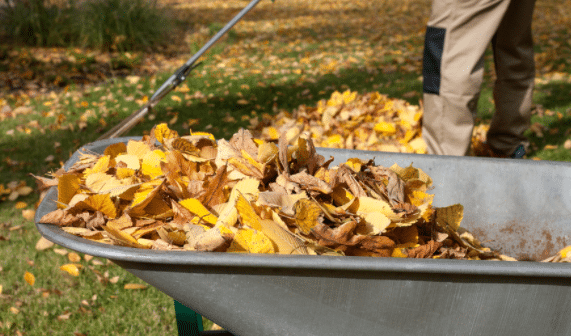Management of fallen leaves is a big headache. But if you are a bit enthusiastic, these leaves are converted into compost soil with little effort. There are many benefits of mulched leaves. It makes healthy, nutrient-rich soil for your garden and reduces the stress on landfills.
We have ten tips for mulched leaves composting. Next time don’t get rid of those fallen leaves in the garbage. Instead, make your compost for garden soil.
Contents
Make A Compost Pile

A compost pile should be 3 ft X 3 ft. If you need more, make additional piles but keep them of standard size, not bigger or smaller. This standard size will make a healthy compost.
The best place to make a pile is in a shaded place where there is good airflow. Ensure the pile maintains enough heat for decomposing.
Mix Grass Clippings To Shred Leaves

Adding grass will increase the nitrogen content in the mixture. Once you have mixed grass and leaves, remember to stir them regularly. The compost spot should be well maintained, having adequate drainage.
Some people add fertilizers to increase the nitrogen content. However, we suggest putting new-fallen leaves in a pile of old leaves to maintain a balance. In addition, adding food waste also helps.
Use A Leaf Mulcher

A mulcher reduces the pile in a 10:1 ratio. It is perfect for adding trees to the compost pile or airing garden soil. A mulcher can be very efficient when you are short of space. It can reduce the volume of leaves considerably.
Add Worms For Magical Results

You may hate worms, but love them for good compost. Worms like earthworms and tiger worms eat the waste material converting them into valuable compost. These worms love the humid, moist condition inside a compost pile. You can get these worms in compost shops or tell your local gardener to arrange some for you.
Enclosing The Pile

Enclosing the compost pile will maintain heat and accelerate the decomposition process. In addition, it will provide you with nutrient-rich compost by protecting the pile. You can make a simple box-type enclosure or place a cover over the pile of compost.
Maintain Your Compost Pile

Maintaining the compost pile is not a difficult task. All you need to do is stir the compost every week. Use a pitchfork or a shovel to stir it properly. It is also advisable to add water once a week to keep the pile moist.
Insulate Your Compost Pile

Insulation is achieved by adding a layer of straw, cardboard, or sawdust. In winters, keep the compost pile in the sun to activate the microbes. In extreme winters, protect the compost from snow and frost.
Prevent Leaves To Mat

Matting of leaves prevents the passage of water and air to lower layers. Therefore, it will stop the composting process in the lower layers. An excellent composting system like a three-way bin can solve the problem. Another way to resolve the problem is by adding an enzyme activator.
Maintain A Right Balance

The mantra is to keep green and brown leaves in balance. For wet compost, add brown leaves, and for dry compost, add green leaves with some water. Adding crumpled bits of cardboard is a great way to create air pockets.
Select The Right Compost

You must be aware when the compost is ready for your garden. If your compost is ready, you will have a black soil type layer at the bottom of the bin. This compost has the proper nutrients for your garden.
Conclusion
For those of you who are new to composting, these tips will be handy. Apply these simple tips that will cut your expenditure on buying fertilizers and will also reduce garbage disposal. Remember not to add meat, dairy products, or pieces of bread to your compost pile.